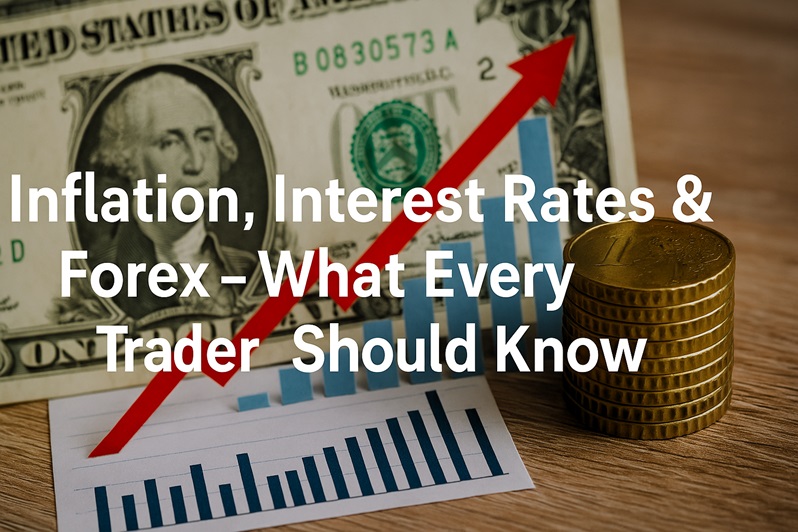
In the dynamic world of forex trading, macroeconomic indicators play a vital role in shaping currency values. Among the most influential of these are inflation rates and interest rates. Understanding how they interact and impact the currency markets is essential for every trader who wants to stay ahead of the curve and make informed decisions based on market signals.
Inflation and Its Effect on Currency Value
Inflation reflects the rate at which the general level of prices for goods and services rises. While moderate inflation is a sign of healthy economic activity, excessive inflation diminishes a currency’s purchasing power. Traders often monitor inflation closely because it directly influences central bank policies. When inflation rises above target levels, central banks may tighten monetary policy, often by raising interest rates, to stabilize the economy. This response typically strengthens the currency, making it more attractive to investors.
Conversely, low inflation or deflation can prompt central banks to lower interest rates, weakening the currency. This dynamic makes inflation a core metric in any forex strategy built on fundamentals.
The Role of Interest Rates in Forex Trading
Interest rates are arguably the most direct tool central banks use to control economic performance and inflation. They also drive the yield differential between currencies, making some more appealing than others for investors seeking returns. Traders often pursue “carry trade” strategies, which involve borrowing in low-interest currencies to invest in those with higher yields.
When a central bank signals an upcoming rate hike, the currency typically gains strength in anticipation. Understanding central bank decisions and the economic indicators they rely on is a key advantage for forex traders looking to interpret market sentiment and price movements.
Combining Both for Trading Success
Effective forex strategies often incorporate both inflation and interest rate analysis. These factors don’t exist in isolation—they influence each other and reflect broader economic conditions. For example, during periods of stagflation (high inflation with stagnant growth), currency markets can become volatile and unpredictable.
Professional traders use economic calendars, news releases, and central bank commentary to stay informed. Monitoring inflation reports like the Consumer Price Index (CPI) and interest rate decisions from central banks such as the Federal Reserve, ECB, or Bank of England can help anticipate significant market moves.
Developing a Strategy Around Economic Indicators
To trade successfully in this environment, traders must develop a plan that reacts not just to technical signals but also to macroeconomic developments. This includes setting alerts for inflation data releases, analyzing how previous rate decisions impacted the market, and understanding the broader economic narrative that drives policy shifts.
Combining technical analysis with economic insights gives traders a well-rounded edge, improving timing and the ability to hold positions with confidence when the market reacts to news.
Conclusion
Inflation and interest rates are among the most powerful forces in the forex market. They influence monetary policy, investor sentiment, and ultimately, currency direction. Mastering their dynamics gives traders a crucial edge and allows them to build strategies that are not only reactive but proactive. If you’re looking to take your trading to the next level, understanding these economic fundamentals is a must.
Want to improve your macro-based strategy? Start tracking central bank data today!
FAQs
Why do interest rates affect forex trading?
Interest rates influence the return on a currency. Higher rates attract investors and usually strengthen the currency.
How does inflation impact currency value?
Higher inflation can erode purchasing power, often weakening a currency—unless counteracted by interest rate hikes.
What is the relationship between inflation and interest rates?
Central banks adjust interest rates to control inflation. They often raise rates to curb rising inflation and lower them to stimulate spending.
Can I trade forex using only economic indicators like these?
While many traders use them, combining economic indicators with technical analysis provides a more complete strategy.
Which reports should I follow to monitor inflation and interest rates?
Key reports include the Consumer Price Index (CPI), Producer Price Index (PPI), and central bank interest rate announcements.
